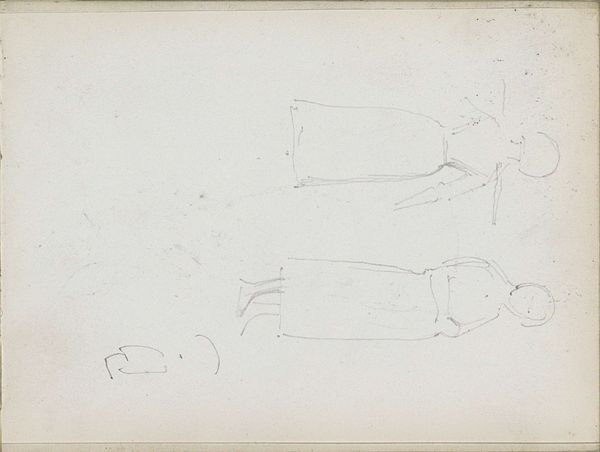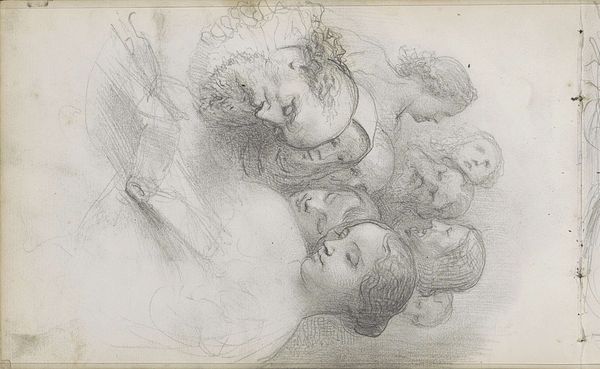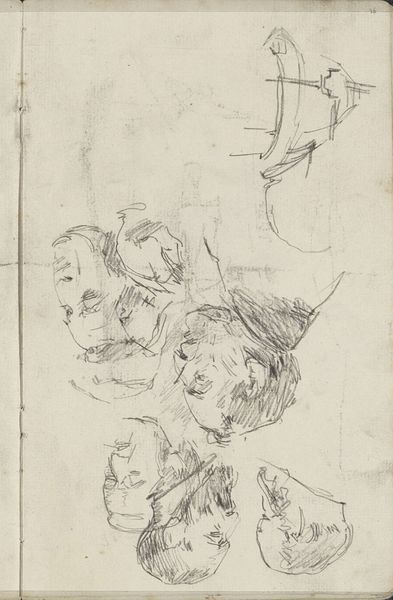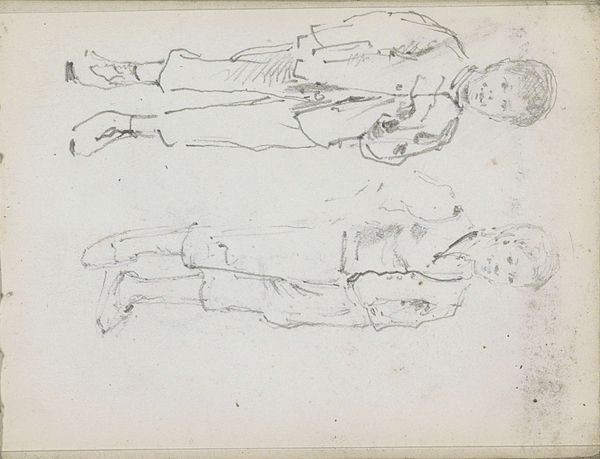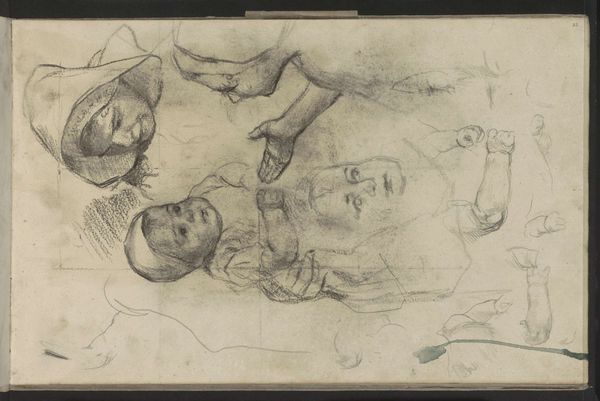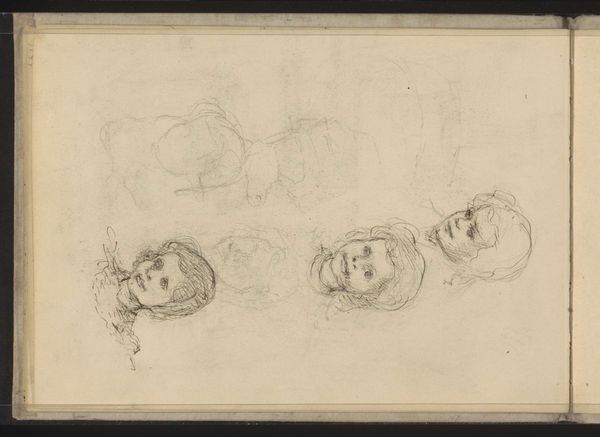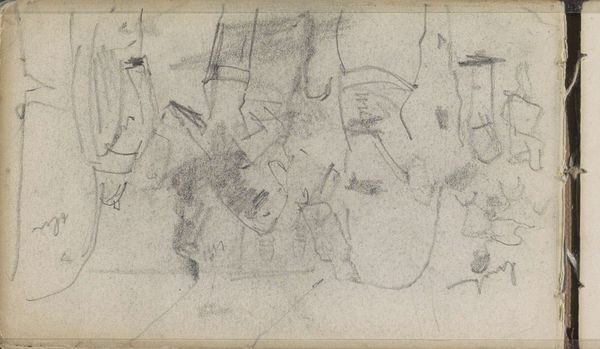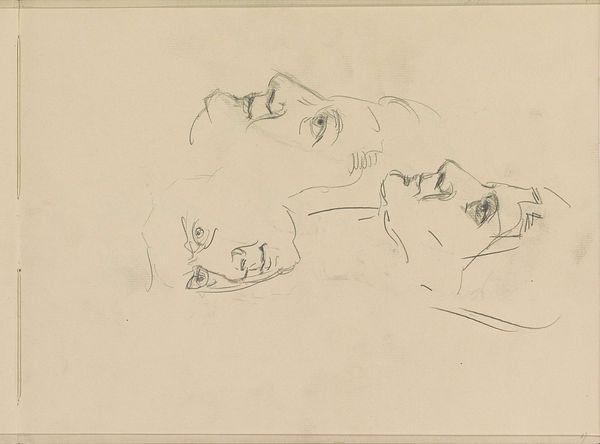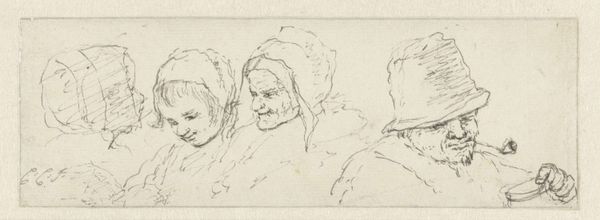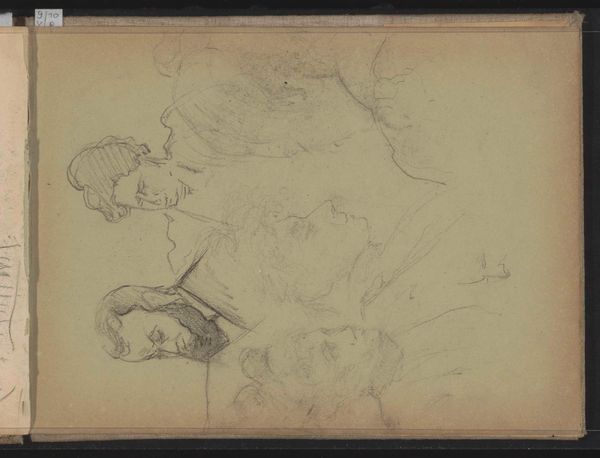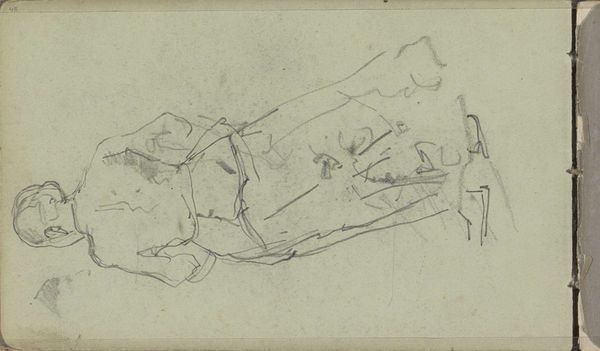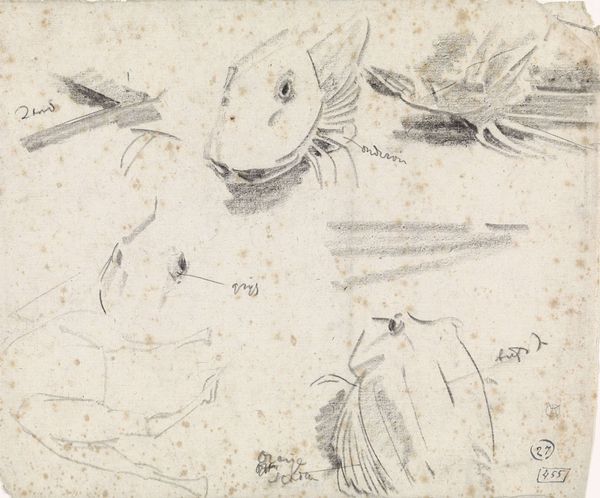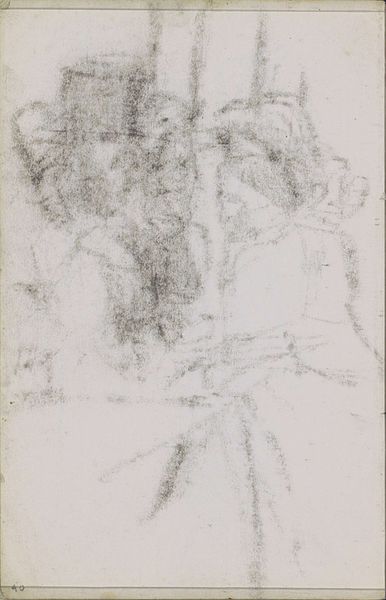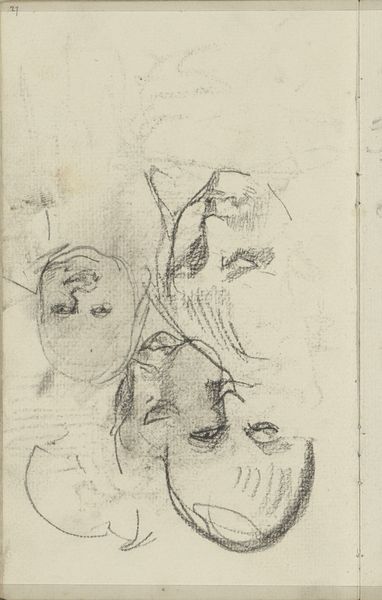
Copyright: Rijks Museum: Open Domain
Curator: Here we have "Drie Vrouwen," or "Three Women," a pencil drawing by Jozef Israëls, created sometime between 1885 and 1902. Editor: It's so wispy, like a half-remembered dream. The composition feels almost accidental, like the women are floating on the page. What do you think? Curator: Well, Israëls was a key figure in the Hague School, part of a movement toward realism after romanticism, and his art focused a lot on daily life. So, while this seems like a simple sketch, it also shows us the style that was in demand at that time. These quick portrait drawings capture the lives of everyday women in a very honest way. Editor: I feel a stillness to it, not boring, but almost haunting. Their faces seem so serene. What I’m seeing in this sketch is more in line with their emotional lives, wouldn’t you say? The realism, it does provide us something very beautiful that isn’t necessarily what someone’s life would actually entail. It feels more poetic than realistic. Curator: It's a complicated dialogue to interpret a fleeting impression of everyday life versus idealized notions of "realism," though it may give us a small picture into the lives of Dutch women in those communities and how society looked at their roles during the time period. What Israëls is expressing here definitely feels related to societal interpretations. Editor: Maybe the beauty comes from the simplicity, the very minimal execution of the sketch itself. It’s unfinished and feels authentic and not at all pretentious, no? I mean that has to come across, that art isn’t some untouchable high society standard, but what everyone else is thinking about as well. Curator: That’s what draws me in, how it resonates within the larger context of its time. Thanks for reminding me about that! Editor: And thank you for digging deeper into it! This was enlightening for me.
Comments
No comments
Be the first to comment and join the conversation on the ultimate creative platform.
